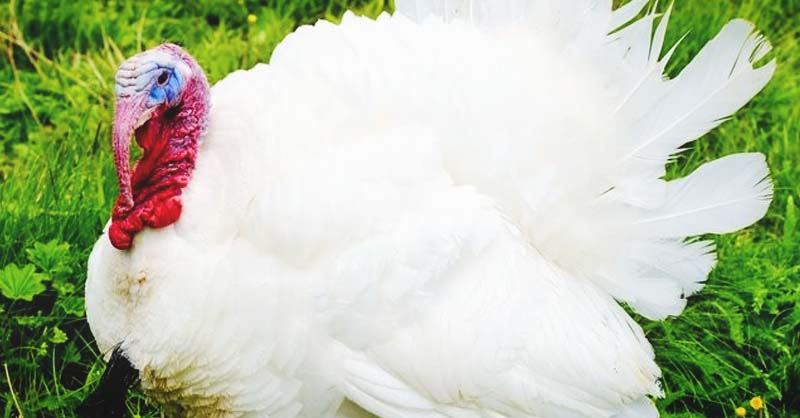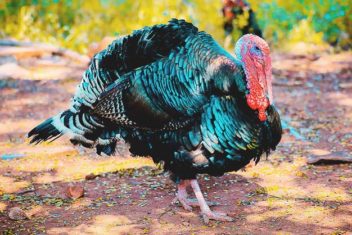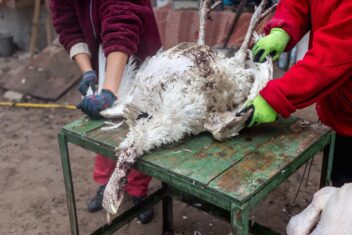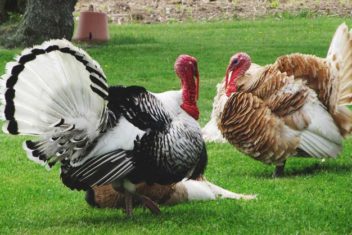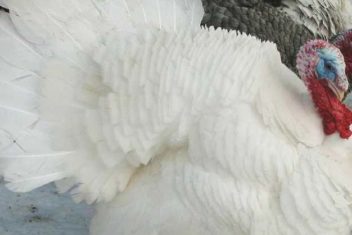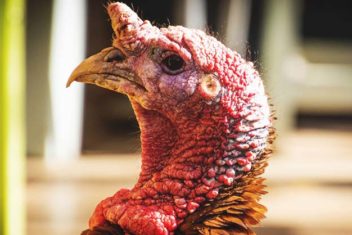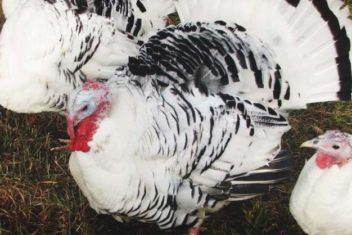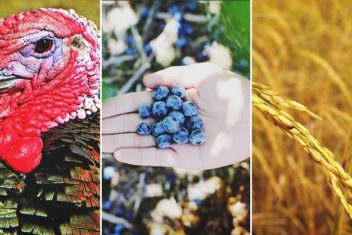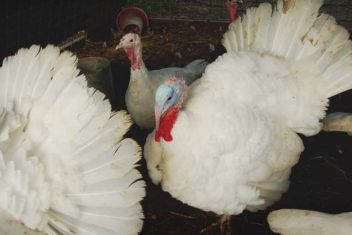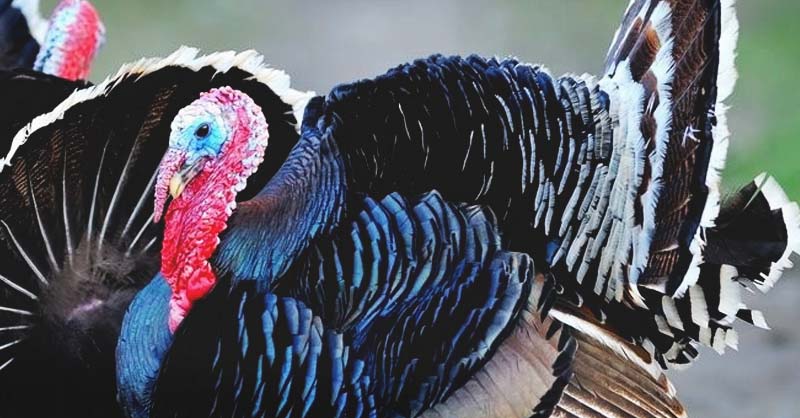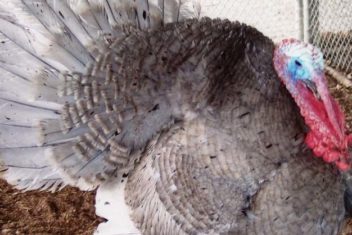If you’ve ever eaten a turkey from the grocery store, chances are it was a Broad Breasted White Turkey. Due to their rapid growth and large processing weight, this is an ideal breed for today’s meat industry. A survey in 2012 showed that 87 million turkeys were consumed in America alone over the course of the year. You can bet the majority of those were Broad Breasted White Turkeys.
However, these massive birds aren’t for every homestead, some farmers choose to raise smaller and slower growing heritage breeds, claiming they taste better. Let’s look at this breed and decide what works best for your farm.
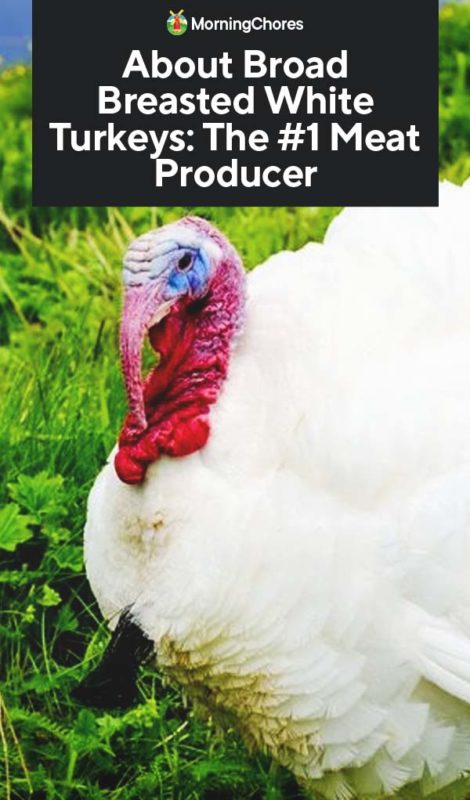
About Broad Breasted White Turkeys
This turkey breed was developed by crossing Hollands and Broad Breasted Bronze turkeys. The resulting bird grew faster, larger, and had a cleaner looking carcass.
In 1874, this new breed of turkey was accepted into the American Poultry Association. Once the breed was accepted, it proceeded to take the position of the most popular turkey breed, formerly held by the Broad Breasted Bronze.
Broad Breasted White Turkey Characteristics
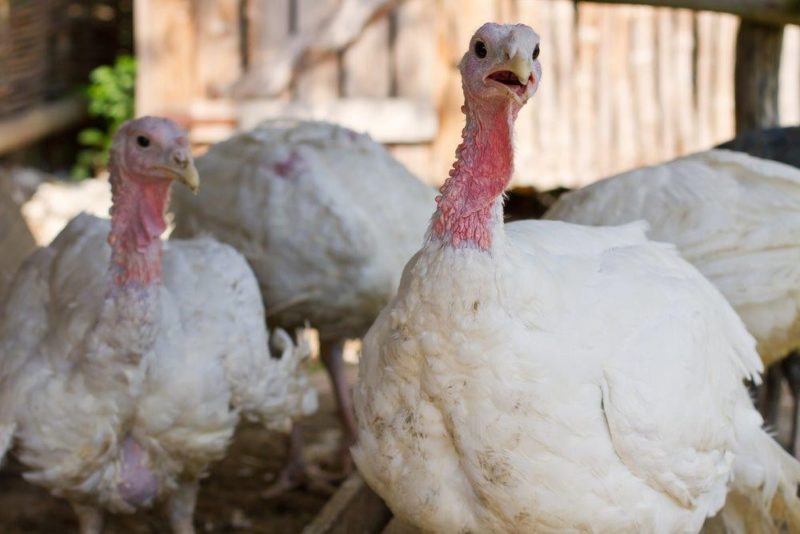
1. Size and Weight
Easily outweighing your cat, lap dog or any other fowl in the barnyard (unless you own emus or ostriches of course), these are definitely not small birds. Often the tom turkeys can weigh up to 40 pounds! The hens typically weigh less, weighing around 25-30 pounds.
2. Temperament
These turkeys can sometimes be a bit of a toss-up as far as temperament goes. Generally speaking, Broad Breasted White Turkeys have fairly docile temperaments, with the occasional aggressive tom.
Since consumers raising their own meat often purchase sexed males, the flocks can get rather angsty towards butcher time as the males mature.
3. Meat Production
It’s no secret why these turkeys are the leading breed for the commercial meat industry. On top of their fast rate of growth, Broad Breasted Whites produce more meat than any other turkey breed. They also produce a large amount of sought after breast meat, a well-loved favorite of many people.
4. Egg Production
Generally, the sole purpose of turkey keeping is not egg production. However, the beautiful speckled eggs they produce are definitely a gorgeous bonus.
Broad Breasted White Turkeys are not the best for egg production, unfortunately. These birds run into some health issues as they reach adulthood. While this isn’t an issue for the people immediately processing their turkeys, one expecting a good long egg production life will be disappointed.
Taking Care of Broad Breasted White Turkeys
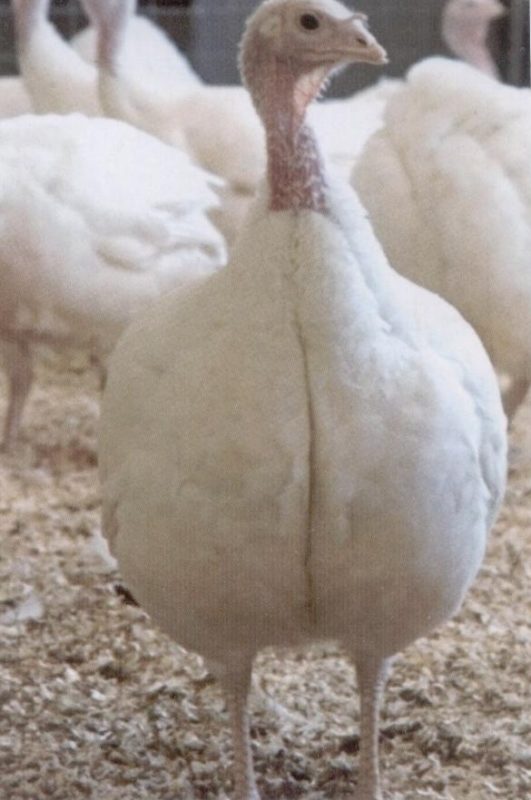
1. Feeding and Nutrition
Young turkeys have very rapid growth and require more protein than most poultry types. Feed your poults with a 30% protein starter until your poults are 8 weeks old. Once your birds reach 8 weeks old, switch them to a high-quality flock raiser with 20% protein and high-calorie content. Your birds can remain on this flock raiser until it comes time for butchering.
2. Housing and Fencing
Since these are such large birds, they will undoubtedly require a large amount of space. Inside your coop, you will need to provide a minimum of ten square feet per adult bird to make sure everyone has enough space.
When providing roosts, take care to place them no more than 18 inches off the ground. Jumping off high places for large birds such as a turkey causes leg and feet issues after an extended period.
If your turkeys are kept in a fenced-in area, a half acre is adequate spacing for a dozen turkeys. You can free range adult Broad Breasted White turkeys with peace of mind because you don’t have many predators to worry about. Your most significant concerns will most likely be unrestrained large dogs.
3. Health Issues and Care
As with many heavily streamlined production breeds like White Leghorn chickens and Cornish X chickens, so much focus is put into one trait that other things such as health fall by the wayside.
Broad Breasted Whites have been bred completely for meat and their health isn’t the greatest as a result. Once these turkeys reach their full weight, they will begin to slowly deteriorate. Heart issues, respiratory complications, and joint issues will likely bother your birds if they are kept long past butchering time.
Unfortunately, nothing can be done about this other than to process on time or raise better-rounded breeds that can tolerate longer lives.
4. Breeding
Another challenge in raising this breed is the fact they are generally unable to breed naturally. If you’re interested in breeding Broad Breasted Whites, it’s a likely possibility you’ll need to inseminate artificially.
It’s also hard to keep the same breeding flock for very long with this breed due to the issues they run into with age.
Turkey Breed Alternatives
1. Midget Whites
Although this breed ends up on the other side of the size spectrum, Midget Whites were modeled after Broad Breasted Whites. Midget Whites share many of the same characteristics as Broad Breasted Whites, but without the challenges with breeding and health. When I say small, I mean small though! Midget Whites often don’t weigh more than 13 pounds.
2. Broad Breasted Bronze
As a breed used in the breeding of Broad Breasted White Turkeys, these birds are rather comparable. Weight is a bit less, as toms don’t usually tip the scale past 25 pounds with hens a bit smaller. An added bonus is they can breed naturally, saving you a great deal of time and resources.
Did You Know?
The gobble of a tom turkey can be heard from up to a mile away! Pretty crazy, right?
How do you like this breed? They might not be a fit for your homestead or they could be just right! It’s up to you to decide whether or not this is a good breed for you. Decisions are fun, best of luck with yours!

